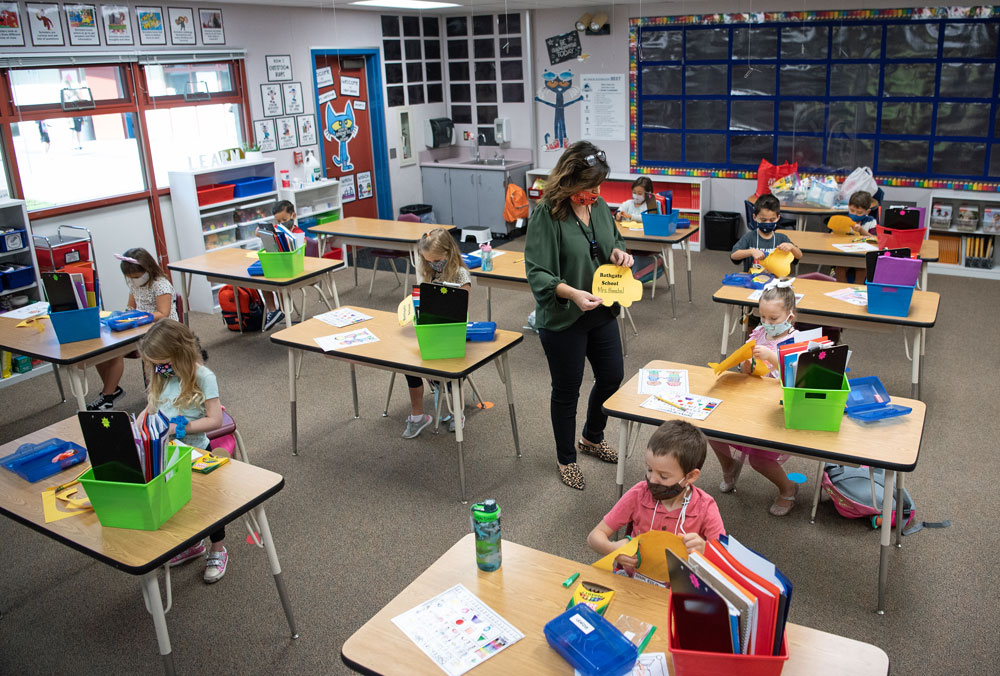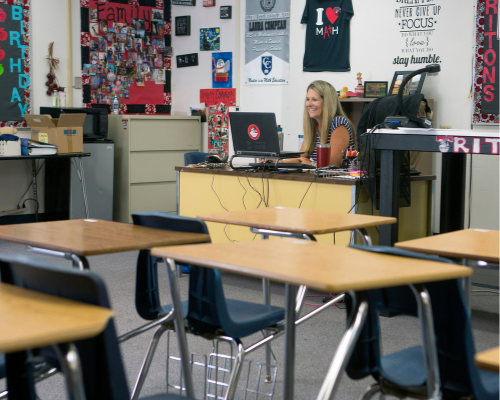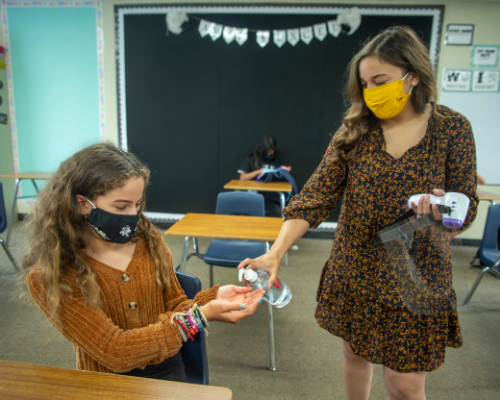It’s a new year, but things are still far from normal. We get some perspective from the Orange County Superintendent of Schools Al Mijares on what to expect in the year ahead.
Parenting OC: What is the state of education in Orange County for 2021?
Al Mijares: In many ways the state of education at the start of 2021 mirrors the end of 2020. We are continuing to grapple with the worst public health crisis of our generation. Yet I sense a budding optimism, with the recognition that vaccines are on the way and the worst is hopefully behind us.
Coming out of winter break, approximately half of Orange County’s school districts were offering remote learning based on elevated COVID-19 rates, while the other half were offering hybrid models with at least some in-person learning, including a number of local high schools. The educators whose careers have collided with this defining moment in our history are continuing to refine their approach to all modes of teaching.
As I’ve said before, I can’t imagine any other industry transforming its entire business model in just a matter of days or weeks. Yet we did, and we have learned so much since March 2020. As we move deeper into the new year, we are only seeing increased innovation and collaboration as our schools and districts continue to push the envelope in the pursuit of continuous improvement.
POC: What can parents and students expect in terms of both distance and in-class learning?
AM: I think parents and students can expect increased levels of engagement as we all grow more accustomed to new technologies and changing learning environments.
Learning may look different in a community with widespread COVID-19 transmission, and certainly distance learning is not the same as in-person instruction. But this should not be viewed as time lost. We are not standing still. Our schools are doing whatever it takes to connect with students while navigating a once-in-a-lifetime pandemic that has taken hundreds of thousands of lives and burdened our health care system like nothing we’ve ever seen.
Our teachers have learned so much over the past year, and they are eager to share best practices with others. This will pay extraordinary dividends down the road. In the meantime, the Orange County Department of Education and our partners are united in our efforts to offset learning losses and establish systems of instructional delivery that support students at home and in the classroom.
POC: Are there any new or updated guidelines for schools and parents to refer to?
AM: The governor has unveiled a preliminary spending plan for 2021-22 that would increase funding for schools and provide additional COVID-19 relief. New investments would target inequities caused by the pandemic, including $4.6 billion for districts to develop interventions that focus on students from low-income families, English learners, youth in foster care, and students who are homeless. This could take the form of new summer and after-school programs. An additional $400 million would help pay for school-based mental health services. All of this requires legislative approval, but it is welcome news.
In an effort to accelerate and support a return to in-person learning for elementary students, the governor is also calling for $2 billion in Proposition 98 funding to be earmarked for his Safe Schools for All plan. Essentially, participating school districts would be able to pursue per-pupil grants by submitting detailed plans for bringing young learners back as early as mid-February. Increased testing and added personal protective equipment are among the requirements.
POC: You’ve mentioned before that addressing the trauma of 2020 is something educators will have to do. Is this something schools are now starting to address?
AM: Even before the pandemic, the Orange County Department of Education and our district partners championed the whole child, emphasizing that every student must be healthy, safe and feel supported at school. This includes promoting social-emotional learning and effective trauma-informed practices.
In 2016, the state selected OCDE as the lead agency in an initiative to help school systems implement the California Multi-Tiered System of Support framework, which aligns new and existing strategies to meet students’ academic, behavioral and social-emotional needs. Based on the theme “All Means All,” MTSS provides core supports for all students, additional assistance for some, and targeted interventions for those with the greatest needs. It looks different depending on each school’s strengths, but the idea is to empower educators to intervene and resolve problems before they escalate into larger issues, and it starts with knowing the name, face and story of every student at a school.
The pandemic has impacted the mental health of children and adults in so many ways, causing feelings such as isolation, uncertainty, depression and anxiety. In support of school counselors, who are finding creative ways to connect with students, we have been providing professional development opportunities covering such topics as virtual group counseling, risk assessment training and suicide prevention.
Again, much of this work predates the pandemic, but it has arguably never been more important. Along with nurturing the five Cs of critical thinking, communication, collaboration, creativity and character, it is incumbent upon educational communities to embrace a larger framework that helps us understand the unique needs of each student, including past traumas and present realities.
POC: What have schools and educators learned from last year that will be used to make 2021 smoother whether in the classroom or online?
AM: As the year drew to a close, we reached out to 10 semifinalists in Orange County’s Teachers of the Year program to see if they’d be willing to share thoughts, insights and reflections on teaching in 2020 for a story in our OCDE Newsroom. Each experience was different, but there were some common revelations.
One educator noted that 2020 felt a lot like her first year of teaching. She and her students had to navigate new modes of interacting — including new technologies — and none of it was easy. But they figured it out together through patience and resilience. Many of our teachers agonized over the disparities they saw among students. Internet connections were not equal. Some children’s devices were not up to the task. And distance learning offered sometimes painful glimpses into challenging lives and domestic environments that are not always conducive to learning.
But our teachers learned something else. Regardless of how or where learning occurs, it is possible to form deep relationships with students, to connect with them, and to inspire and engage them in meaningful lessons. As one teacher said, “The human connections are the same, but the methods of connecting just need to change.”
POC: What do you want families to know about going to school in 2021?
AM: I have often described our schools as lighthouses in our communities, and the last 12 months have demonstrated just how important these lighthouses are not just for academic enlightenment but for the social and emotional wellbeing of young people and their families.
It has been absolutely heartbreaking to see so many campuses empty, and for those that are open, it hasn’t been business as usual. Families that have returned for in-person learning have grown accustomed to face coverings, social distancing and Plexiglas barriers. These measures have proven effective, and that is highly encouraging, but they take some getting used to. I want our families to know that I cannot thank them enough for working through so many challenges and unknowns as true partners, and for taking the sometimes burdensome steps necessary to keep our students, employees and communities safe.
Along with that gratitude, I want to stress that it will not be like this forever. Distance learning will likely remain with us in some form, and for certain families that actually may be the most effective model for instruction. But there is light at the end of the tunnel in the form of highly effective vaccines, and our office is already working with the OC Health Care Agency on plans to get them out to educators and school staff as quickly as possible.
History has taught us that pandemics end. In time, this virus will recede, and our schools will look more like they did before COVID-19, with children collaborating in classrooms and playing together on the playgrounds. That day is coming, and I simply cannot imagine a more welcome sight.
By Jessica Peralta
(Opening Photo Courtesy of Capistrano Unified School District)












Leave a Reply